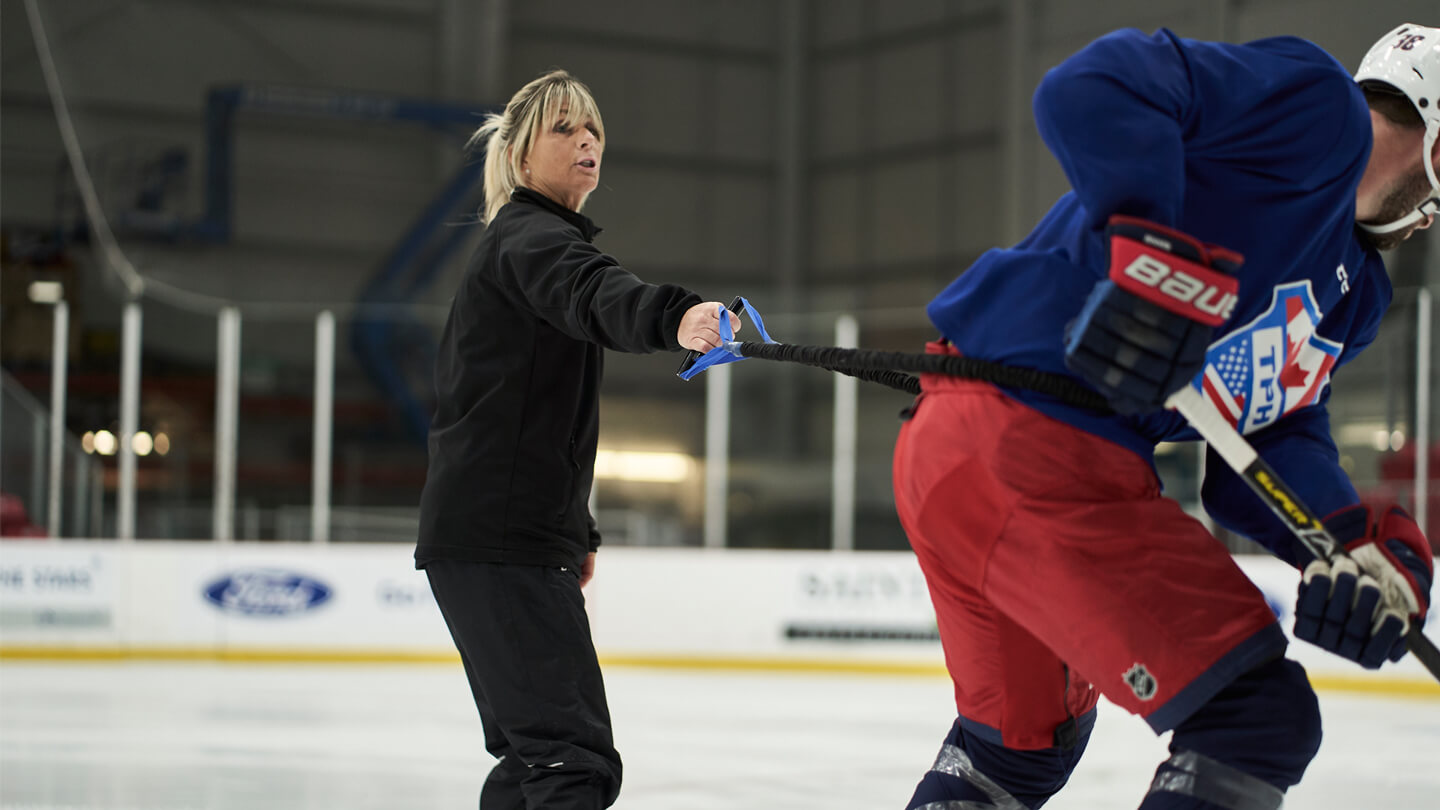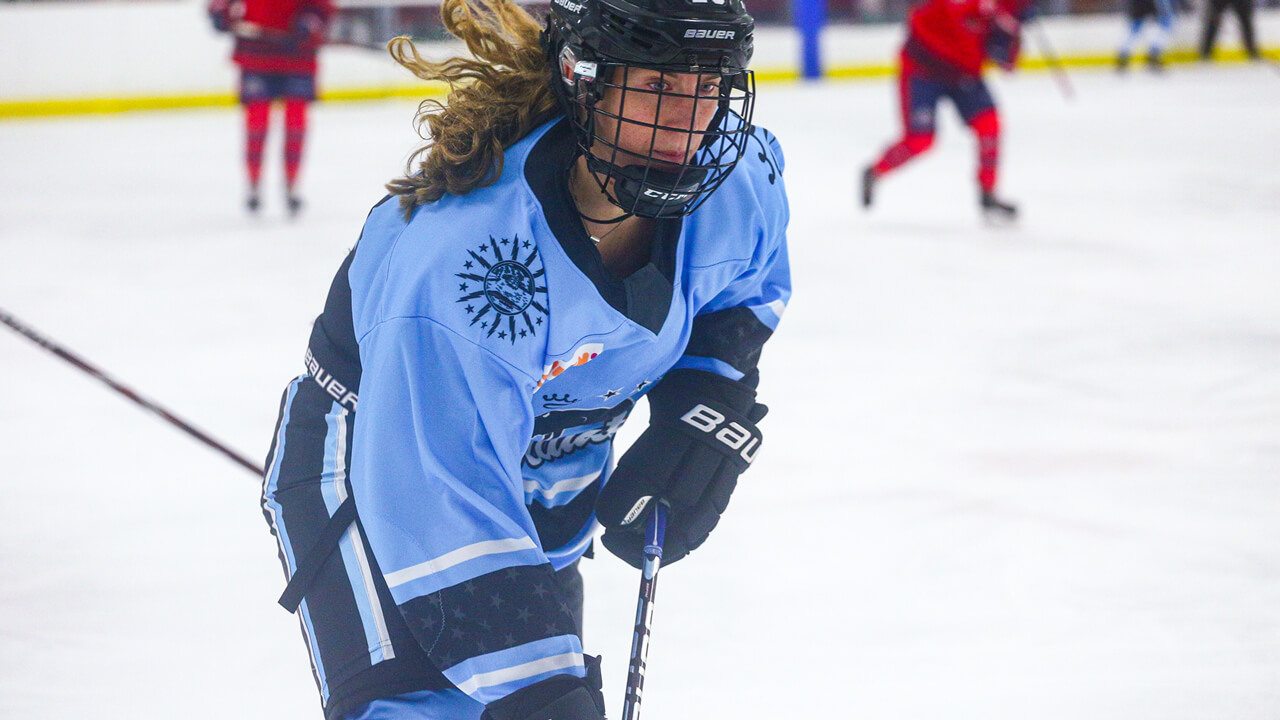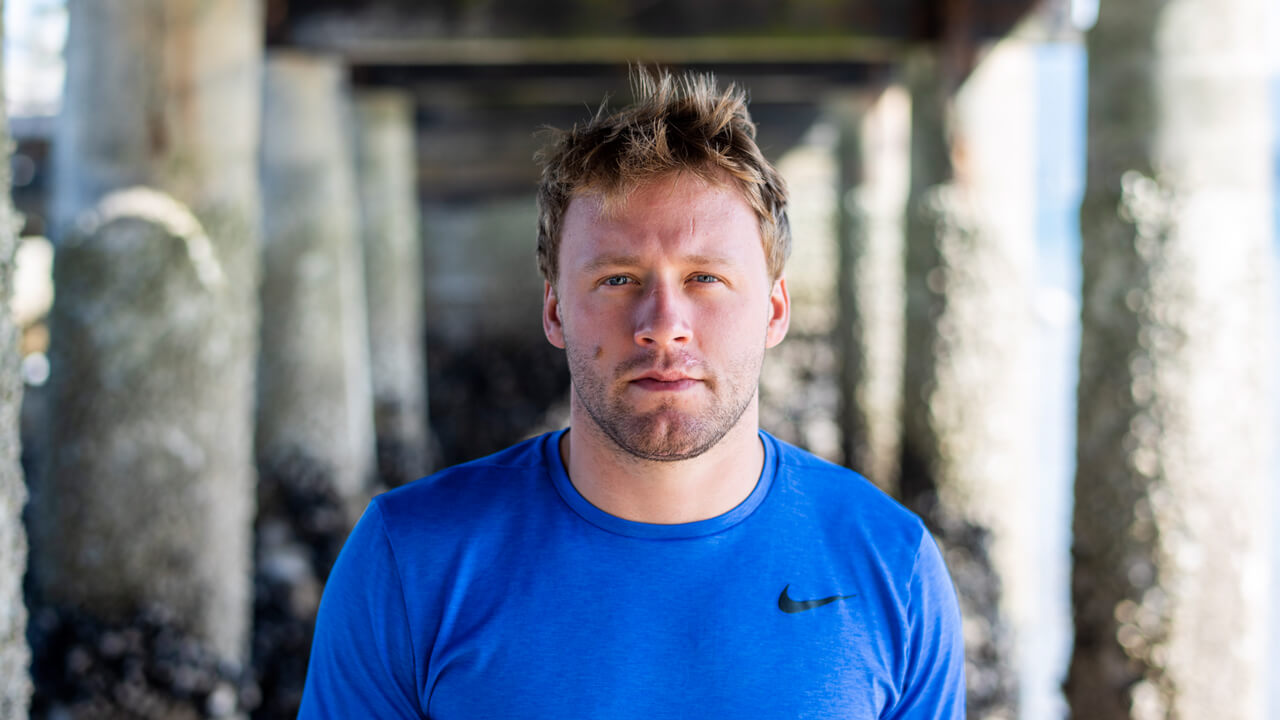“I’ll tell you what, we’re having an earthquake!” — Al Michaels
On Tuesday, Oct. 17, 1989, ABC’s broadcast wasn’t even five minutes old when play-by-play man Al Michaels told the world exactly what was happening at Candlestick Park in San Francisco before Game 3 of the World Series. The Loma Prieta earthquake struck at 5:04 Pacific Time, roughly half an hour before the Giants’ Don Robinson was scheduled to throw the first pitch to Oakland’s Rickey Henderson. The early start was for the purpose of showing the game at a reasonable time in the East, standard practice that likely wound up saving numerous lives.
When the Series began, Northern California was abuzz with talk about the swaggering A’s facing the plucky Giants. After the quake, many wondered whether baseball should resume at all. Sixty-three people lost their lives in the 17-second, 6.9-magnitude earthquake that wreaked havoc on the region. While a chunk of the Bay Bridge toppled and fires blazed in San Francisco’s Marina District, the most devastating event occurred on Oakland’s side of the bay, where the upper portion the Cypress Street Viaduct — a double-decker freeway known as the Cypress Structure — collapsed, crushing cars underneath it.
Only as players, fans and media spilled out of Candlestick did they start to grasp the full scope of what had occurred. And when, 10 days later, the Series resumed and Oakland completed a four-game sweep, the celebration was coloured by sorrow.
Thirty years later, this is how the people who were there remember the ‘Battle of the Bay,’ and the night the World Series shook.
JORGE COSTA, Giants vice-president, operations and security The level of excitement for this World Series was palpable in the region. The Giants had not been in the World Series since 1962.
RICK HONEYCUTT, A’s reliever It’s like the Yankees and Mets — you were either a Giants fan or you were an A’s fan. People were extremely crazy about the Series being right there in the Oakland-San Francisco area. Maybe the rest of the country didn’t care so much because it was two teams on the west coast.
RAY RATTO, San Francisco Chronicle It kind of fit the Bay Area sensibility, which is, “We’re going to throw a hell of a party and we’re the only ones who can be there.” The A’s were so much better and I think [people] thought, “This is not going to be easy watching, but this is ours.”
BUD GERACIE, San Jose Mercury News From the start, you figured [the A’s] would be there. They’d gotten Kirk Gibson’d the previous year [unexpectedly losing the 1988 World Series to Gibson and the Los Angeles Dodgers]. They were loaded. And they were pissed.
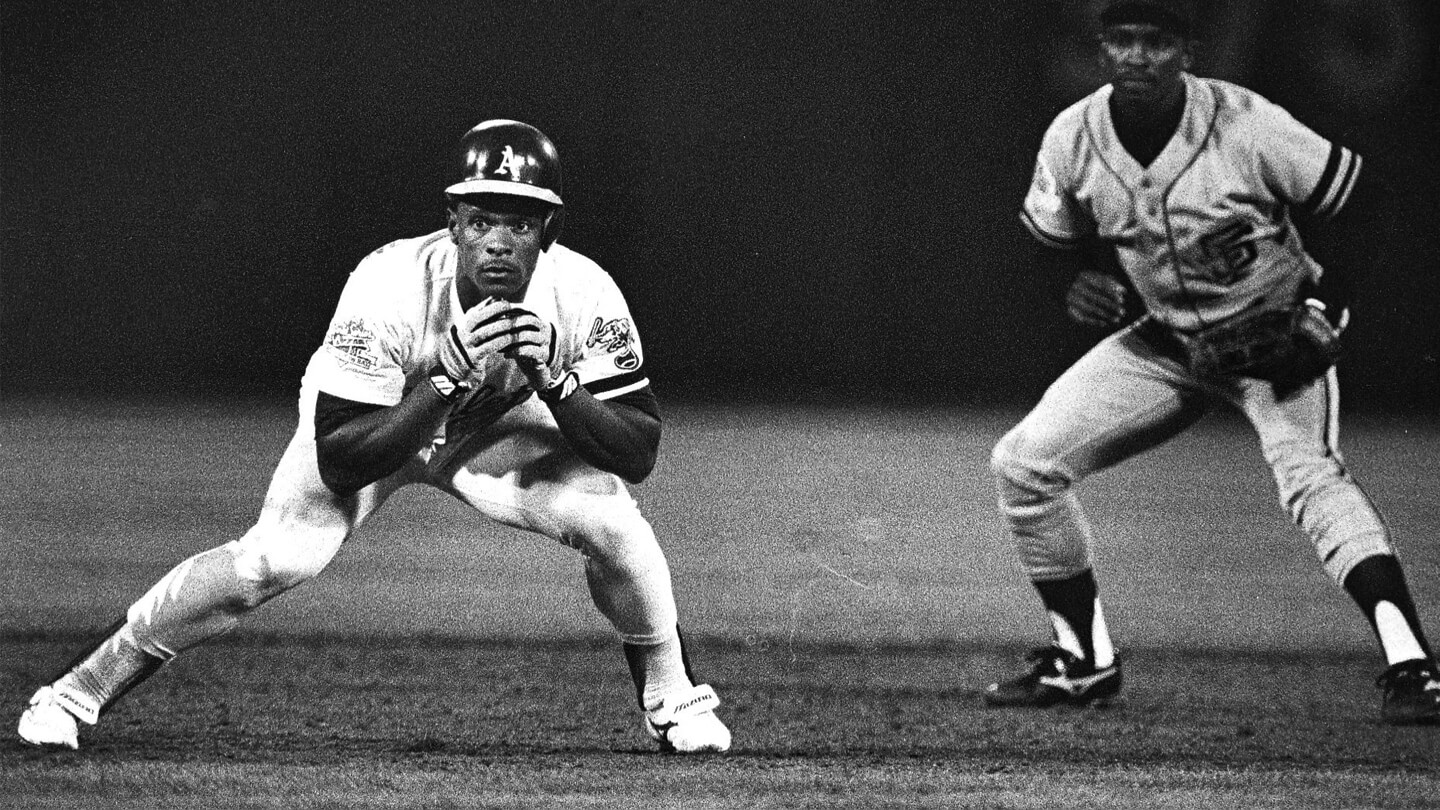
WALT WEISS, A’s shortstop We were very focused in ’89 and we were on a mission. I think if you asked the teams that played against us they would say we were somewhat brash and cocky. We had that element, but it was a very hard-nosed team. We picked up Rickey [Henderson] midway through that season and we had Jose [Canseco], and they were kind of the face of the team. They were the true stars and they had star power, but the rest of that team was very blue-collar and a lot of that really stems from [manager Tony] La Russa and his personality.
RATTO [The Giants had] Will Clark, Kevin Mitchell, Rick Reuschel, Robby Thompson. It was not a great team, but it was a team that figured out how to be better than the sum of its parts. Roger Craig had a very good year managing. He managed by his gut, so he probably would not get a job today. The ’89 team was not a special team, but the National League that year was not a special league. The Giants did what they had to do to get there.
WEISS It was a good team, but we truly felt like we had their number that year, quite frankly. We played them a lot in spring training. When the A’s and Giants played, it was bigger than a spring training game and we were told as much. I want to say we beat them every time. I remember one game in particular, we were down, I want to say, 10 runs in the last inning or two and we scored, like, 13 runs and beat them. It was just one of those things. We played the Bay Bridge Series at the end of spring training; we swept that. We had their number, but we didn’t take them lightly like we did [the Dodgers] the year before. We were very focused to get it done.
Oakland took care of business in Games 1 and 2 at home, winning by a combined score of 10–1, then made the short trip west for Game 3.
GERACIE The steam went out of it so quickly because the A’s crushed them in the first game and then crushed them again. I think most people thought, “It’s over,” but maybe the Giants could do something in Game 3.
COSTA There was no air in the park, it was just hot. Candlestick Park, the pattern was it was always a beautiful day in the morning, it would stay pretty nice and between like 3:00 and 8:00 p.m. the cloud banks would come into south San Francisco and around the ballpark, and the wind would just blow.
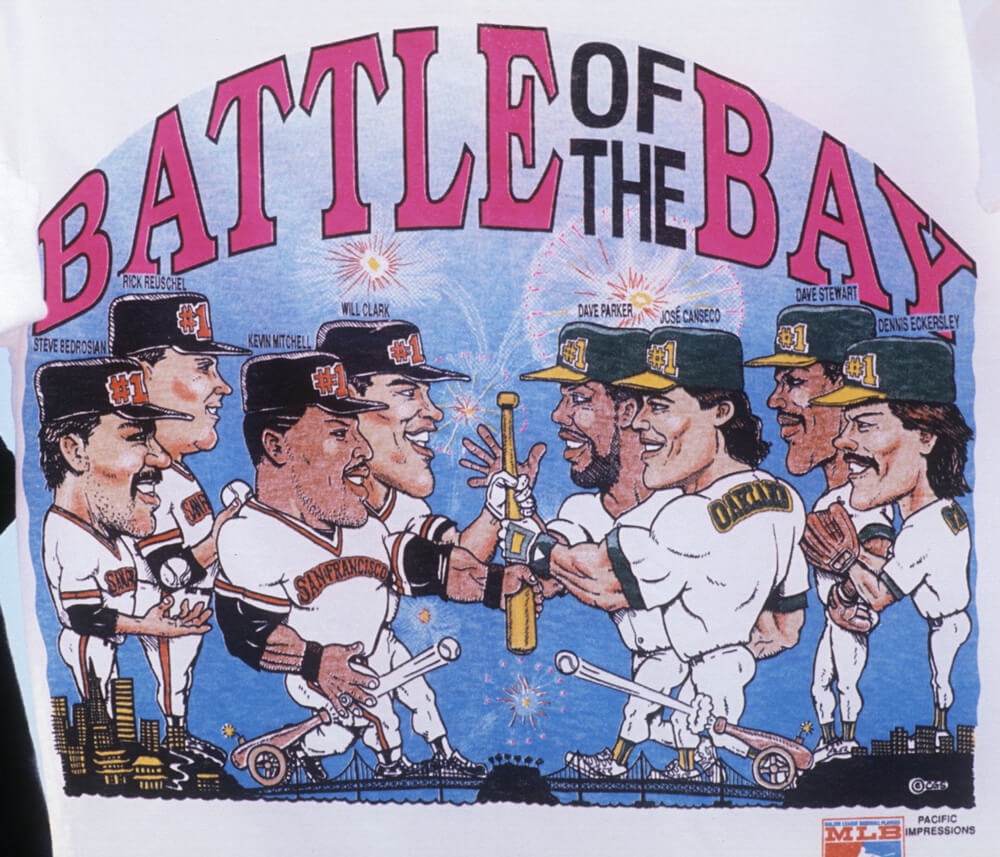
GERACIE Candlestick was horrible. The wind just howled off Candlestick Point. It was cold and it was a crazy, swirling wind. Pop-ups and fly balls were always a problem. Shit would blow around, like hot dog wrappers. It was always cold.
COSTA This day was unique in that it was just unbelievably hot, sunny, no wind — nothing.
TONY KORNHEISER, Washington Post It was an incredible blue-sky day; like, no clouds whatsoever.
JEFF BLAIR, Montreal Gazette I went out for lunch with a couple other writers and we were talking to the waitress and she said, “We call this earthquake weather.” I gather it’s an old wives’ tale that when you get an unseasonably hot day, supposedly it’s earthquake weather.
HONEYCUTT First day of the Series in each town, they’re going to announce the players. The [public relations] people had it all up, what time we had to be on the field for the introductions. Your day starts a little bit earlier than normal. `
COSTA I was getting ready for a game, but it wasn’t just a game; it was a World Series game. The [number of] media people that were there from all over the world was big, you know, just the number of credentials we were issuing was a lot, even [in] those days.
HONEYCUTT It was getting to be the time where everybody had to be out of the clubhouse. There were already some people on the field. The clubhouses were not attached to the dugout, you actually had to go out to the right-field line, then go down to your dugout. The P.R. people are there giving you a heads up, “Okay, you’ve got to be out in 10 minutes, in five minutes.”
TERRY STEINBACH, A’s Catcher Part of not starting [Ron Hassey was slated to catch Game 3 for Oakland because he always worked with starter Bob Welch] is you get the luxury to take in this tremendous event. They had all these festivities and Hall of Famers from the Giants’ past. It was nice to sit back and take it in [from the dugout].
RATTO I was sitting in the press box doing what beat writers do, filling out a notebook, trying to file something early.
COSTA At 5:04, I was actually on a golf cart. I was coming in [through] the centre-field gate. I had picked up Dr. Bobby Brown, who was the president of the American League. He was a native San Franciscan. He was a former New York Yankee. After his playing career he became a medical doctor. His wife was on the cart with me. Candlestick Park is on the flight path of SFO [San Francisco International Airport] and there was a jet that came over and there was a really strong percussion a few seconds before the earthquake started. I was really struck by how strong it felt, there was a like, just a really strong pulling.
RATTO I was in the main press box. There were only about 20 other guys in there because Candlestick Park was an old place [with a small press box]. All of a sudden, it felt like somebody shoved the stadium. The first thing I thought was [there had been an accident] in one of the concession stands. And then you started feeling this rolling.
HONEYCUTT I was still sitting at my locker. I actually thought the noise was coming from the airport. And then there were rumblings. Back then they had these carts that pulled the beer kegs around the stadium. It actually sounded [like that], more like a train kind of sound that was rattling. Before there was any movement there were these noises you heard.
WEISS I recall getting my sprints in down the left-field line and while I was running it felt like I stepped in a big hole.
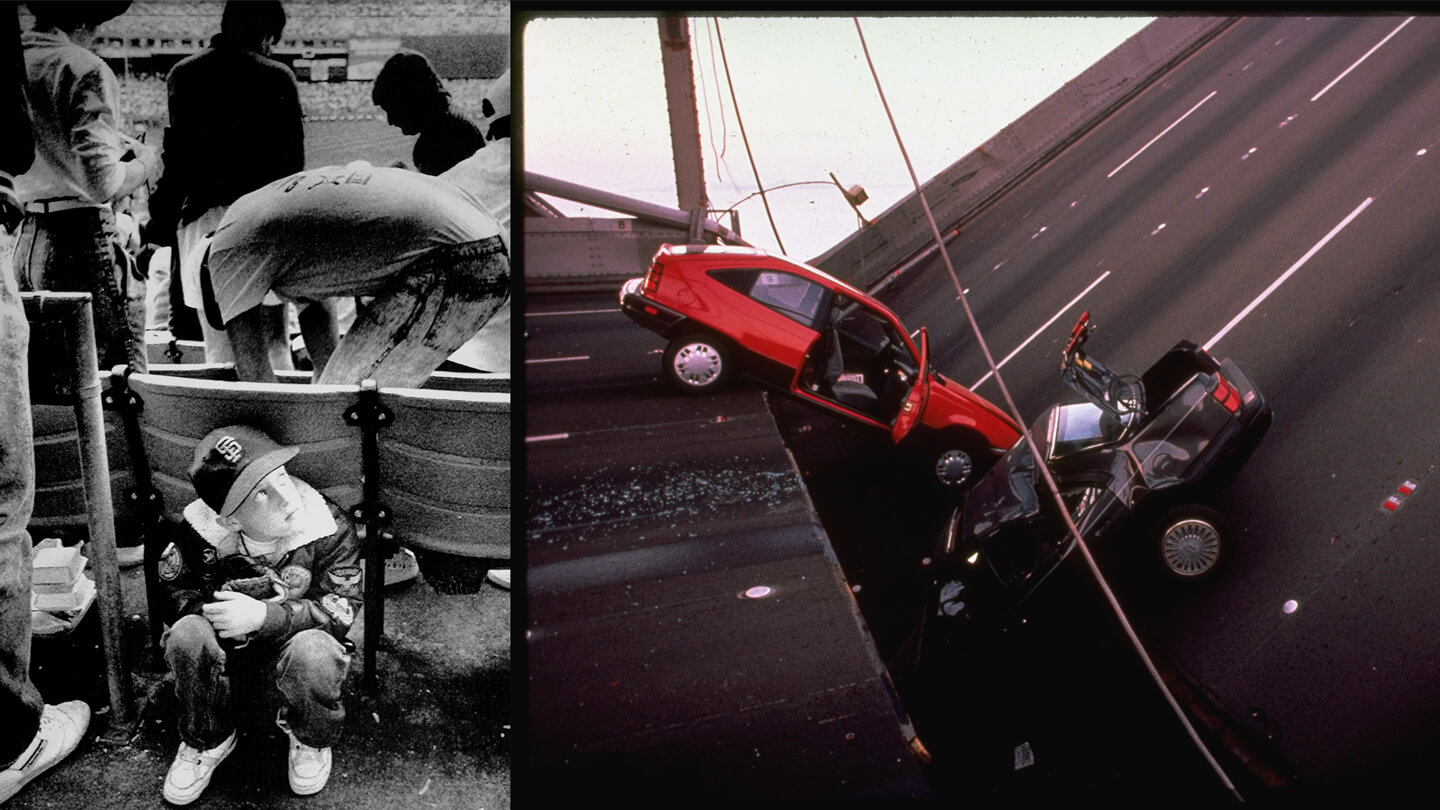
KORNHEISER [The concourses at Candlestick] were on the outside, not on the inside. You walked into the stadium from the concourse. I was watching some guy and girl one floor below us getting hot dogs, and then I feel the rumbling. I’m a Long Island boy, I don’t really know much about earthquakes.
COSTA I turned to [Dr. Brown on the cart] and said, “We’re having an earthquake” and he said “Yes.” Then I said, a couple seconds later, “This feels like a really strong one,” he said, “It is.”
RATTO Because we’ve been through a bunch [of earthquakes] here, we tend to be relatively blasé about it. But it kept rolling. Now it’s 10 seconds, now it’s 15. The next thing I see is almost all the guys in the main press box — most of whom were from out of town — were grabbing their stuff and fleeing at the highest speed that middle-aged men in a cramped area can go.
KORNHEISER I went, “Oh my God!” I got off the concourse and went toward the press box area because I’m about 50 feet away and I do that thing that people tell you to do, which is brace yourself inside a door because that’s a very strong part of a structure.
WEISS I took a stride and the ground wasn’t there for a split second. That’s exactly what it felt like. I guess the ground was moving. I stopped my running and, for about 30 seconds or so, I was looking for a hole. I’m like, “I can’t believe there’s a hole in the outfield that big.” Obviously I couldn’t see any hole, so I just carried on with my pregame routine.
HONEYCUTT It knocked all the power out of the locker room. There were no lights, no auxiliary lights that come on automatically, so you’re locked in this cave; literally the locker room is just totally dark and you’re underneath the stands. When the power went out and the movement [started], then you knew it was an earthquake. I think all anybody could think about was getting out because you knew there was stuff above you that could crumble on top of you. Somebody opened the door and so there was light and people were bumping into each other heading toward this light outside. Tough to walk, just to get outside, but your instincts are just to get to that door and get outside the building.
STEINBACH I remember looking at the rim of Candlestick; I see this rim start to pulsate, almost like if you crack-the-whip with a rope. That’s the part people describe as, kind of, the waviness of it. Then it transformed to the actual shaking, maybe two-to-four physical shakes, like somebody is kicking your chair extremely hard.
RATTO I’m going, “Well this is going to stop at some point.” And it did, and then I said, “Well, that was good, now it’s done.” Then I looked up and all the light towers were dark. I mean it was still daylight savings time, so it wasn’t stark. But I looked up and there were no lights on anywhere and I thought, “This was big enough to blow out the generators.”
GERACIE The crowd began to stamp its feet and cheer. Up in the third deck, I was thinking — and maybe even saying — “No!” One, don’t tempt fate. [Two], I don’t know how shaky this building is right now. Sixty-thousand people stamping their feet, could that bring it down? I think it was largely a California reaction.
KORNHEISER Just incredible cheering like all these people had been through this before and, for them I guess, it was sort of like a theme park ride. I couldn’t get my head around the cheering. Everybody in the stands has been through this, it was only [the out-of-towners who] had no idea what was going on.
COSTA A guy wrote on a sign — I’ll never forget — “That was nothing — wait until the Giants bat.”

WEISS It took a little while for us to find out there was an earthquake. I think the fans probably realized before we did down on the field because we were in an open space, so our perspective was different. And they’re Californians, they probably knew what was going on right away — they thought it was great. Here we are, Bay Bridge Series and [we get an] earthquake.
COSTA During the next [10 to 15] minutes, we’re continuing in pregame mode. There’s a timeline, there’s a run of show for every event, every game. We were still kind of on schedule to start playing at 5:35.
WEISS We’re like, “Okay, now the game is delayed a little bit.” We’re waiting and at some point I remember going, “Let’s go. Let’s get this thing going.”
STEINBACH Everybody [in the dugout] assumed as soon as we get the power on, we’re going to play. The dugouts didn’t fall, the light standards didn’t tip over — there wasn’t any noticeable [damage].
RATTO Then I saw [MLB commissioner] Fay Vincent’s golf cart come out and I said, “Okay, this is not about the players anymore, this is about whether they’re even going to play the game.” It was about that point I started to hear things like the Bay Bridge has collapsed and the Marina is on fire and I said, “They’re definitely not playing the game now, this is a disaster.”
WEISS We couldn’t believe they would actually cancel a World Series game. As time went on we started to understand what was going on; we started to get word how bad it was, the magnitude of it. We were in a bubble. We had no idea what was going on outside that stadium.
STEINBACH We started huddling around this guy who had a portable TV with a coat hanger stuck in it for an antenna.
COSTA One of the first things we noticed is we had no P.A. There was no ability to communicate with the crowd. The scoreboard was essentially a series of dots. At the same time, we’re up on the emergency power, but we don’t know a couple things: No. 1, aftershock considerations. No. 2, we really don’t know what’s happened in the building. We don’t have any real quick way to assess if there’s any damage. As the news came in about these other situations, we knew, at some point, the resources that were at the park [police, fire department, medical staff] would have to go elsewhere. When we knew we did not have any assurance of the functionality of the scoreboard, the P.A. and the lights, that was pretty much a non-starter for the game to continue, even before all that other stuff happened.
At some point the decision is made to have a handwritten sign placed on the hood of the police car that’s on the field that basically says the game has been postponed due to a temporary power disruption. We never mentioned the word “earthquake.” We were concerned if we did that it may cause a sense of panic.

HONEYCUTT As soon as I get [onto the field], all I could think about was my family. I had [roughly] 20 people there — my parents, my wife’s parents, my kids, aunts and uncles, college buddies who had come to the game — and they were coming on the bus and you hoped they were already at the stadium. You knew where the family section was, so you were looking up there. The players who were already [on the diamond], they were pulling their families onto the field. People from our club, security people, were actually wanting you to make sure you connected with your family to make sure all the heads were counted.
COSTA A couple subliminal things happened. We pulled the bases off the field, so people are like, “They’re not playing.” And then the families came down from the stands and walked across the field. So then everybody kind of knew. People started making the decision to leave on their own. It was not a formalized evacuation, it was a dissipation.
RATTO It was now about 6:30 p.m. I’m the only one in the press box because all the other phones are dead. A cop was coming in and saying, “You gotta go.” So I just said, “Have you talked to your wife yet?” I didn’t know who the guy was, didn’t know if he was married. [I told him], “My phone works, you can call her from here.” And he says, “Okay, great. Thanks.” He calls his wife, makes sure everything is okay and as he’s leaving the press box he says, “You’ve got 15 minutes, then you’ve got to go.” I ran that scam about four times, so I didn’t really leave the press box until nine o’clock, so I was almost certainly the last person there except for people studying for damage.
WEISS We were going to take a bus back to the Oakland Coliseum. I spent a lot of that time [before we left] looking for my [then girlfriend, now wife], but she never got to the stadium. I didn’t know for several hours.
STEINBACH They just gave us garbage bags and said, “Go into your locker and grab your personals and get on the bus because we gotta get the hell out of here.”

HONEYCUTT We got on the bus with our uniforms on. We were not allowed to go across any bridges. We had to go all the way down to San Jose and stay on land and then come back up to Oakland. Normally, it would be only a 45 to 50 minute trip. It took many, many hours to get home.
WEISS That drive was chaos. It’s one of the things I remember most. It was a free-for-all. It was a logjam on the freeways, people were driving across dividers, they were going the wrong way on exit ramps; anything they could do to get home. When driving, you just didn’t know what was ahead of you. Once the Bay Bridge collapsed, you’re thinking the worst.
HONEYCUTT Everybody was very concerned about [Oakland pitcher] Bobby Welch because he lived in San Francisco and he and his wife had just had a child and her mom was staying [at home with the baby] and they were in the Marina District where there were fires. Bobby actually just started toward the freeway and tried to get a taxi.
WEISS My wife was driving to the stadium with her dad and they never made it. The road was rippling and it just felt like all your tires blew. They pulled over to the shoulder like all the other cars did.
RATTO The part of the [Cypress Structure in Oakland] that collapsed was this double-decker section that was built on landfill, as much of the immediate Bay Area is. My wife would take that freeway home every night, so I was freaked out about her. I was able to call my cousin who lived around the corner from us and I said, “Can you keep an eye out for my wife?” She actually left early, because a lot of people left early to go watch the game, so she missed the tragedy.
It was at that point I realized the baseball game probably saved tens of thousands of lives because a lot of people went home early. The freeway was not jammed the way it normally would be. In that way, baseball did a service. This could have been a much more horrendous tragedy. As it is, 63 people died, which is a lot, but given the nature of everything, it should have been 1,000 times that.
BLAIR Everybody just started writing. The idea is you’ve got to get the sucker done before your [first-generation laptop battery] runs out. I don’t know who it was — and I should because the guy was single-handedly responsible for about 30 newspapers getting their stories in that day — somebody from ESPN or NBC said, “We’ve got a lot of auxiliary power in the truck. Why don’t you guys charge up there?”
RATTO The marina was on fire. The bridge was down. Every horrible scenario you could hear was being rumoured one way or another, but the stadium just sat there like this great middle finger to nature like, “You got everything, but you didn’t get me.” It was built to, like, 1940s Russian specifications; it was all steel and concrete. It was not pretty by any means … but it was built to withstand anything at a time when a lot of buildings in San Francisco weren’t even earthquake proof. But this thing, it was too ornery to die.
WEISS We [lived] down toward San Jose, so I had to go all the way back down to San Jose from Oakland. I remember when we got to the Coliseum, trying to call the apartment we were living in and all the lines were dead. So then I just got in my car and started heading south. That was an eerie drive because there was virtually no one on the road at this point, which is eerie enough in California. I’m driving and thinking, “Am I going to drive into a hole?”
By the time light returned to the Bay Area, baseball was the last thing on anybody’s mind. Shortly after the earthquake, Fay Vincent held a candlelight press conference to announce the suspension of the Series. “It is becoming very clear to all of us in Major League Baseball that our concerns — despite this rather large gathering — our issue is really a modest one in light of the great tragedy that hit this area.”
BLAIR Basically [MLB] said, “We’ve said to the City of San Francisco and the City of Oakland, ‘You just tell us what to do. If you want us to bugger off, we’ll bugger off. If you want to wait for a week, [we’ll do that].’” I’ll give baseball credit — and I saw the same thing after 9/11 — they really did step into the background and there was no pressure exercised on either city, at least that we could tell, to speed the process up.
COSTA There was real concern about the community, the appropriateness of playing the game at all given the death [and] destruction.
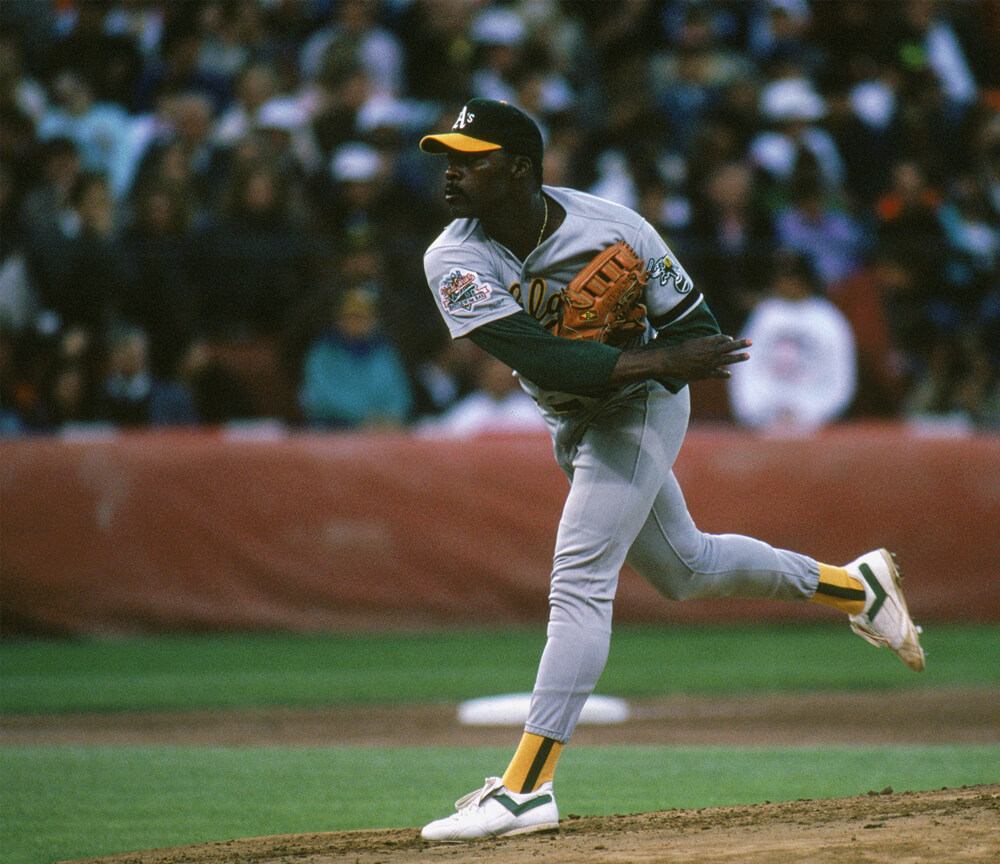
BLAIR Watsonville is a big agricultural area [south of San Francisco], there were a lot of migrant workers there. The destruction there was just awful. There was a church service there on the Sunday and I remember attending that even though it was in Spanish and I couldn’t understand a word of it. That’s where the [extent of the] destruction really set in. You can always tell when there’s destruction in a big city, but when you get into those smaller areas and the houses are perhaps not all earthquake proof, you’re talking about streets that are just piles of lumber.
WEISS We were in a holding pattern. It wasn’t a great situation because just a short distance from [our stadium] was the Cypress Structure which collapsed and people died and they were pulling bodies out of there for several days after the earthquake. I remember going to the grocery store and there were no lights, it was like a Twilight Zone [episode]. This is national, even world news at this point and we’re having to answer questions like, “Should you guys be practicing when they’re pulling bodies out of the rubble a couple of blocks away from here?” How do you answer those questions and sound empathetic or even intelligent?
COSTA This was a huge, huge debate.
STEINBACH It was a struggle between the professional part — being greedy, being hungry, being determined that this is our year, we’re going to win this World Series — and the humanitarian issue. There were lives lost, there was millions of dollars of damage and you watch the TV and think, “What is this silly little game we’re playing?”
HONEYCUTT We [eventually] went to our spring training complex in Phoenix and worked out there for a couple of days until they made a decision. But [before we left] we visited hospitals and different shelters for people who had been injured, especially on the Oakland side. It was very devastating; kids in the hospital who they had maybe cut out of a car, maybe amputated a leg or arm to get them out of vehicles.
RATTO The A’s had Dave Stewart, who was basically five guys in one. He was born and raised in Oakland, and he more than anyone else ran that clubhouse. I remember this iconic photo of Stewart bringing coffee to a workman at the collapsed freeway site. He was Oakland through-and-through.
WEISS We kind of looked to Stew for guidance and direction. He led the charge, going to the site of the Cypress Structure and trying to help out, lend support. He was certainly out in front.
I think going down to Phoenix really helped us. We made our practices open to the public and we were filling our stands and they were charging people to get in and it was going toward earthquake relief. We had our own mini inter-squad World Series.
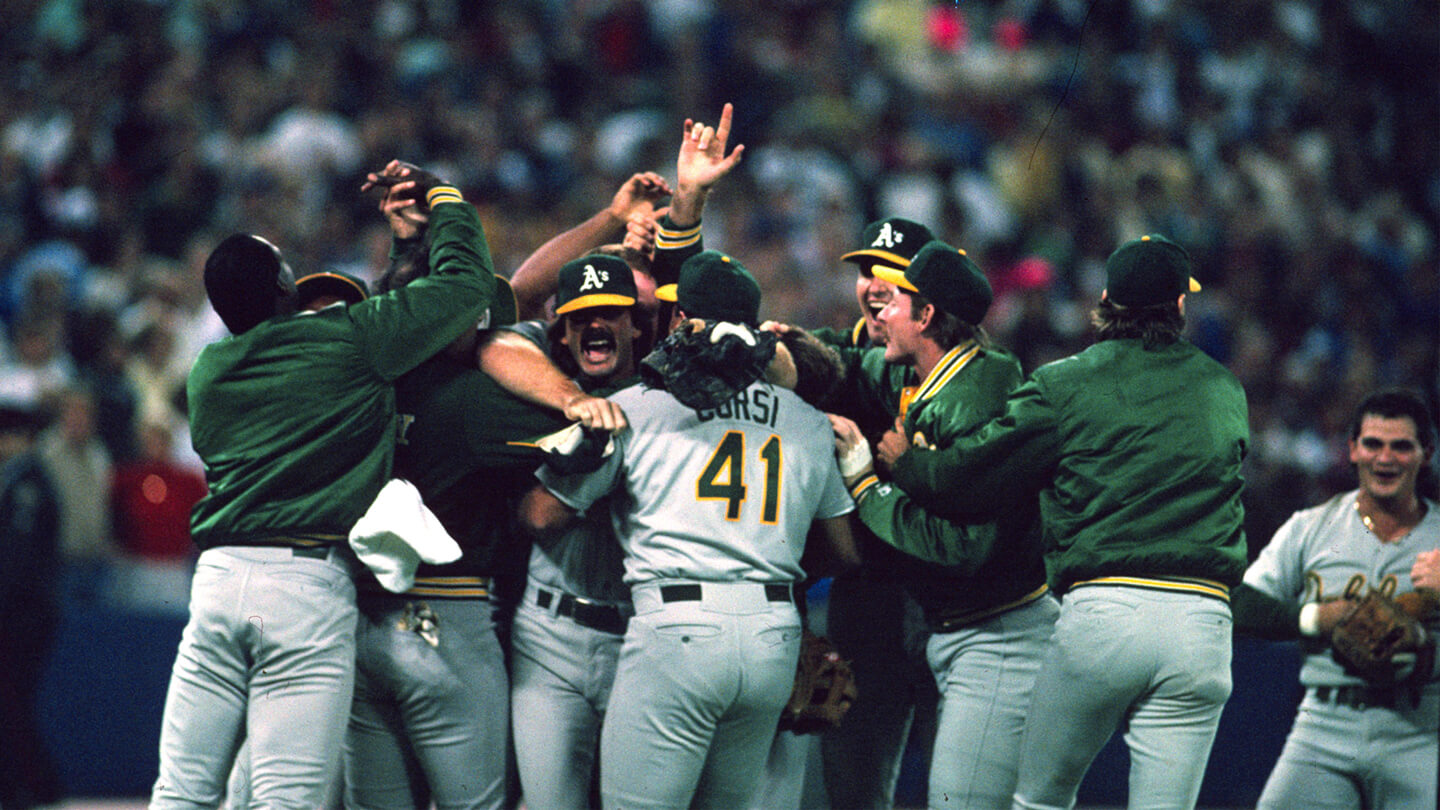
COSTA The decision was [eventually] made to play the game, that it would be helpful to the community to heal and to celebrate the spirit. The series resumed October 27, 10 days from the day of the earthquake.
HONEYCUTT Then it was a totally different atmosphere. There was a lot of sorrow, a lot of different thoughts. Baseball became secondary, really. It was tough, I think, for Major League Baseball to make the call to resume the series. We had psychologists come in to talk to us individually. It was a very strange thing to go through.
BLAIR After that, it was the flattest World Series I’ve covered.
WEISS It’s a tough spot to be in: You want to be empathetic, at the same time it’s our livelihood and we get to a World Series after losing the one before and we’re kind of on course for what we set out to do. It’s really difficult to get to a World Series, let alone win one.
RATTO The Giants did the best they could, but they were dealing with way too much. I think the Giants were disappointed, but relieved. I think a lot of them just wanted to go to their off-season homes and get away from all of this. As for the rest of the Bay Area, everything was pretty muted. The earthquake was everywhere.
WEISS No champagne. I think we had cider. Obviously it wasn’t your typical World Series celebration.
HONEYCUTT There was celebration on the field, but I think we did it right. There was no parade, no ticker tape. We had a small gathering in Oakland, basically the team members and the front office. There was definitely [attention paid to people who’d suffered]. The club was very, very conscious of not doing anything disrespectful.
RATTO I think people just wanted to be done with 1989 in the Bay Area.
COSTA The way people were during that time, how they banded together, the sense of humanity and passion in the community — it’s still one of the most amazing times to have been here and witness that.
Designed and edited by Evan Rosser.

